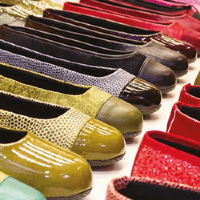A third of store managers overall (34%) said they recorded online sales.
There were wide variations between categories – particularly in those categories where online sales are becoming more integral to performance and mirrored the structural changes taking place within these categories.
Gyms and Cinemas were most likely to record online sales (91% and 83% respectively). Although the number of outlets in these categories formed a small part of the sample, all bar one in each category recorded online sales. The ease of purchasing gym passes and membership online (as well cinema tickets) is clearly visible here. In addition, the increasing trend for unmanned gyms and cinemas lends itself to online bookings.
Bookmakers (8%), Opticians (10%) and Fast Food / Takeaway (14%) were least likely to record online sales. In the case of Bookmakers, there has been a move towards fewer betting shops in addition to a thriving online betting market which, if captured within the realm of a store, would likely boost store sales significantly.
In terms of Opticians, a purchase is likely to have been made as a result of a personal consultation with a professional in-store rather than an ad hoc purchase made online.
On a geographical level, stores in the South East were most likely to record online sales (38%) with stores in Scotland least likely (29%).
.png)
.png)
.png)


.png)